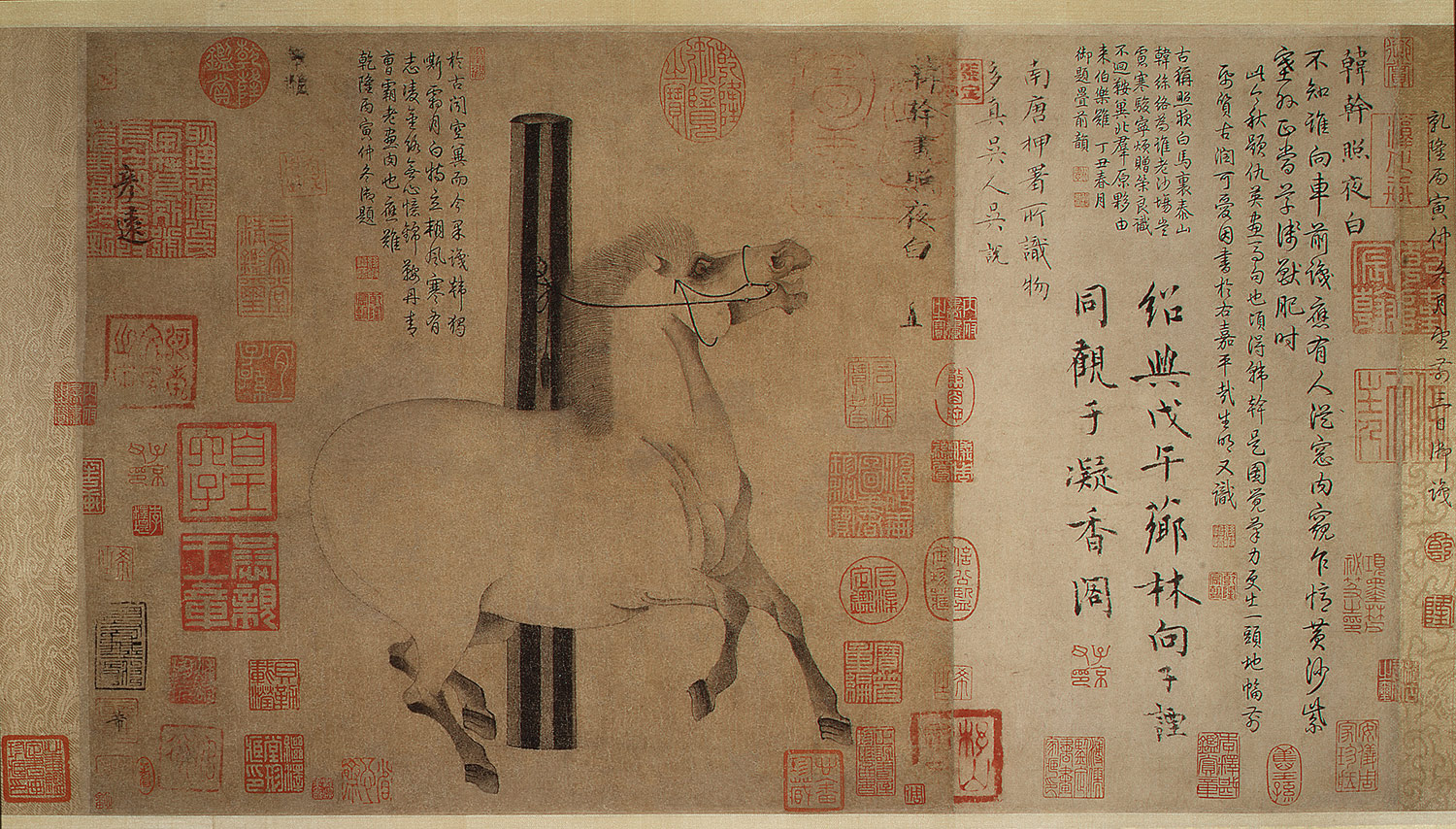 |
| Han Gan: "Night-Shining White" ca 750 (Tang dynasty) |
China at the Heibrunn Timeline of Art History INDEX PAGE
- “Chinese Painting” HERE
- “Landscape Painting in Chinese Art” HERE
- “Scholar-Officials” HERE
- “Chinese Calligraphy” HERE
“A Look at Chinese Painting” (Metropolitan Museum) HERE
“Anatomy of a Masterpiece: How to Read Chinese Paintings” HERE
Chinese Panting in Context (Asia Society) HERE
Key points:
- Chinese paintings are not usually in the Western format (framed, hung on wall as false window); they can appear on handscrolls, wall scrolls, fans, and in many other formats
- Chinese paintings typically include written as well as visual content
- Chinese paintings often are marked with stamps that provide information on ownership of the painting
- Some beginning ideas on the Chinese aesthetic:
- unification & balance between opposites: object / concept; visual / written; figure / ground; etc.
- less emphasis on originality & uniqueness; more on conformity & collaboration
(Also: the “Six Principles of Chinese Painting” stub at Wikipedia)